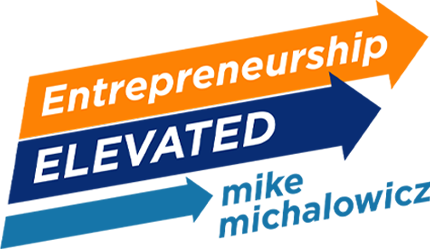When businesses get stale and lose their creativity and ability to innovate they do one of two things. They order in doughnuts or bagels and lots of coffee and call a staff meeting. Then they sit around a conference table, sweat and worry a lot while they brainstorm the same old ideas, hoping someone comes up with something new. Or, they hire a consultant, who usually knows less about their day-to-day routines than they do, and then they hope he (or she) finds a new way to innovate.
Neither way works very well. Why not? Because innovation is really about paying attention and seeing things you never noticed before, and in a new and different way. Brainstorming regularly falls into a ineffective loop of the same five ideas. And most (but not all) outside consultants bring an innovative approach, but fail to make the change stick.
If you’re feeling like your innovation generator is stuck and you are having trouble getting traction, use the four steps of ripple innovation to grease your inspiration and feed your creativity and jumpstart your innovations.
I call this four-step process “ripple innovation” because it expands out from the initial splash of thought in rings, just like the ripples that form when you throw a rock into a pond. The biggest wave is near the center, and the farthest reaching wave is on the outside. Start with your splash, what you want to innovate. Then follow these for ripples to find it:
Ripple 1 – Find The Solution Inside Your Company
What are you currently doing in another part of your business that you can use to drive the innovation you need in this part of your business?
For example, UPS used one little innovation to speed up their delivery times. They looked for existing drivers who were completing their routes faster than average each day (look for what’s working, not what’s broke). They found that certain high performers wouldn’t put their keys in their pockets when delivering a package. Instead they would have their truck key hanging off their pinky finger.
When they got back to the truck they didn’t need to fumble through their pockets looking for their keys. The 3 or so seconds it saved on each delivery added up. The 3 seconds times the 30 deliveries a day, times 200 times a year saved about 5 hours a year per driver. Not bad when you realize that UPS has 240,000 drivers. That little pinky innovation is saving UPS the need to hire 600 additional drivers to cover the lost time.
Ripple 2 – Find The Solution Inside Your Industry
If you can’t find the innovation inside the first ring (your business), you then go one ring out.
Ask yourself: What is your competition doing that you can use to innovate in your business?
Sam Walton was once said, “I believe I am Kmart’s best customer. I have visited almost every one of their stores.” He constantly evaluated other retailers and copied what they did best. Among the many innovations he extracted from his competition was the centralization of the checkout process. Instead of having a checkout in each department of the store, he centralized everything to one checkout line at the front of the store. Walmart leaped forward and set a new standard that we see everywhere today.
Ripple 3 – Find The Solution In Any Industry
If you can’t innovate from within your business or your industry, go another ring out and examine other industries serving the same customer need. Vernon Hill, the founder of Commerce Bank, which ultimately sold to TD Bank for $6 billion, wanted to make banking ultra-convenient.
Banks were notorious for being anything but convenient for their customers, so Hill looked outside his industry. He found that fast-food restaurants had a lock on drive through convenience. He took their best innovations and made them the new standard for banking—late hours every day, open 7 days a week, and he even copied the happy meal trick, by putting a treat in for the most common passenger in the car coming through the drive thru… the family dog.
Ripple 4 – Find The Solution In Nature
When there’s not a solution inside your business, inside your industry or even inside any industry, it’s time to look at the widest ripple in the innovation splash—look at the entire world around you. Nature is the ultimate innovator and inventor.
Case in point? George de Mestral. Mestral invented Velcro after he found his dog covered with burs. Curious about how stubbornly the burrs clung to his dog’s fur, he took a closer look. Then he replicated Mother Nature by making Velcro. The rest is entrepreneurial history.
Remember, innovation is just a matter of looking at the world and your business differently. Instead of innovating out of the thin air, start with ripple innovation. The innovations are all around you already, you just need to seek them out.










